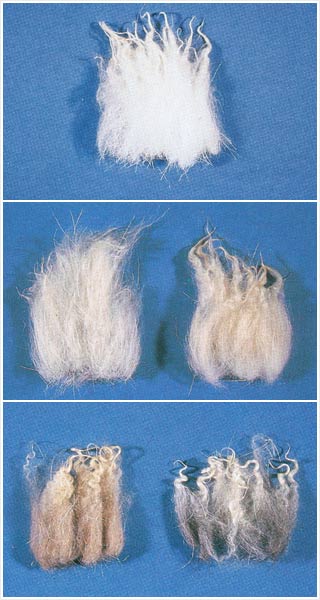The Opulence of What Is Cashmere: How It Changes Your Wardrobe
The Opulence of What Is Cashmere: How It Changes Your Wardrobe
Blog Article
Recognizing the Various Kinds Of Cashmere a Natural Fiber and Their Unique Advantages

The Origins of Cashmere: A Historical Overview
While the elegant touch of cashmere proceeds to beauty modern customers, its beginnings map back to the severe, cool environments of Mongolia and the Himalayas. For centuries, the native individuals of these areas have been increasing Capra Hircus goats, the prime source of cashmere woollen. These goats, resilient versus the severe wintertimes, grew a fine undercoat to survive, which later on ended up being called cashmere. The name itself pays tribute to Kashmir, an area in India where the woollen was initially refined. Much of the early cashmere trade path was assisted in by the Silk Roadway, linking Asia with the Middle East and Europe. Despite its international spread, the finest cashmere is still believed to stem from the original areas of Mongolia and the Himalayas.

The Production Process: From Goat to Garment
Shearing a Capra Hircus goat marks the creation of the elaborate cashmere production procedure. This delicate procedure commonly takes place yearly throughout springtime. The penalty, soft undercoat is after that divided from the coarser external hair, a procedure known as dehairing. The resultant raw cashmere is after that cleaned to eliminate pollutants such as dirt, oil, and veggie issue.
The tidy fiber is subjected to dyeing, spinning, and weaving, or knitting, to transform it into a textile. Complicated procedures like high quality control checks and completing procedures follow, making sure completion item maintains the luxurious criterion anticipated of cashmere. This meticulous process, from goat to garment, justifies the high expense attached to cashmere products, making them a symbol of luxury and refinement.
The Numerous Kinds of Cashmere: An Extensive Analysis
The One-of-a-kind Advantages of Cashmere: Convenience and Sustainability
Moving from the selection of cashmere types to the benefits they use, comfort and sustainability stand out plainly. Cashmere, a natural fiber, is renowned for its exceptional soft qualities, giving a degree of convenience that synthetic fibers can not match.
When it involves sustainability, cashmere is eco-friendly and naturally degradable, as it's gathered from cashmere goats that regrow their layers each year. what is cashmere. Unlike artificial fibers which can take hundreds of find this years to break down, cashmere's effect on the atmosphere is minimal. This mix of comfort and sustainability makes cashmere an advantageous selection for aware customers

Taking Care Of Your Cashmere: Upkeep and Conservation Tips
While cashmere is certainly a lasting and glamorous choice, it calls for certain treatment to preserve its high quality and extend its life-span. To begin, cashmere need to be hand washed utilizing cold water and a mild cleaning agent. Stay clear of wringing the garment or turning as it can harm the fibers. Instead, gently eject excess water and lay it flat on a towel to completely dry. Cashmere products must be stored in a completely dry and great location, away from direct sunlight and dampness. Using moth repellents can shield these garments from possible damage. It's a good idea to prevent hanging cashmere to prevent extending. Instead, fold and store them effectively to keep their form and quality with time.
Spending in Cashmere: Comprehending Its Value and Well Worth
Although cashmere might originally appear like a pricey investment, its lasting worth and worth ended up being noticeable when you consider its amazing top qualities. Known for its unrivaled softness and heat, cashmere is a costs natural fiber that exceeds various other materials. Its high need and limited supply add to its high rate, but its resilience ensures it lasts for many years, providing excellent worth for money. Cashmere items are timeless, usually find more info ending up being heirlooms passed down through generations. what is cashmere. Its natural shielding residential or commercial properties offer heat without the mass of synthetic fibers. Investing in cashmere, consequently, is not simply concerning current style patterns, yet concerning accepting a sustainable, long-lasting, and luxurious way of living.
Conclusion
In recap, the kind of cashmere one selects, be it Mongolian, Chinese, or Italian, is determined by private choices for heat, budget plan, high-end, and sustainability. Understanding the origins, production procedure, and distinct advantages of various kinds of cashmere can direct consumers in their financial investment in this luxurious natural fiber.
Whether it's the outstanding warmth of Mongolian cashmere, the price of Chinese cashmere, or the eco-conscious manufacturing of Italian cashmere, there's a story to be discovered behind each fiber type. Cashmere, an all-natural fiber, is renowned for its unrivaled softness, providing a level of comfort that artificial fibers can not match.When it comes to sustainability, cashmere is renewable and biodegradable, as it's gathered from cashmere goats who regrow their coats yearly. Known for its unrivaled gentleness and heat, cashmere visit this page is a costs natural fiber that surpasses various other products. Recognizing the origins, production procedure, and special benefits of different types of cashmere can guide consumers in their financial investment in this luxurious all-natural fiber.
Report this page